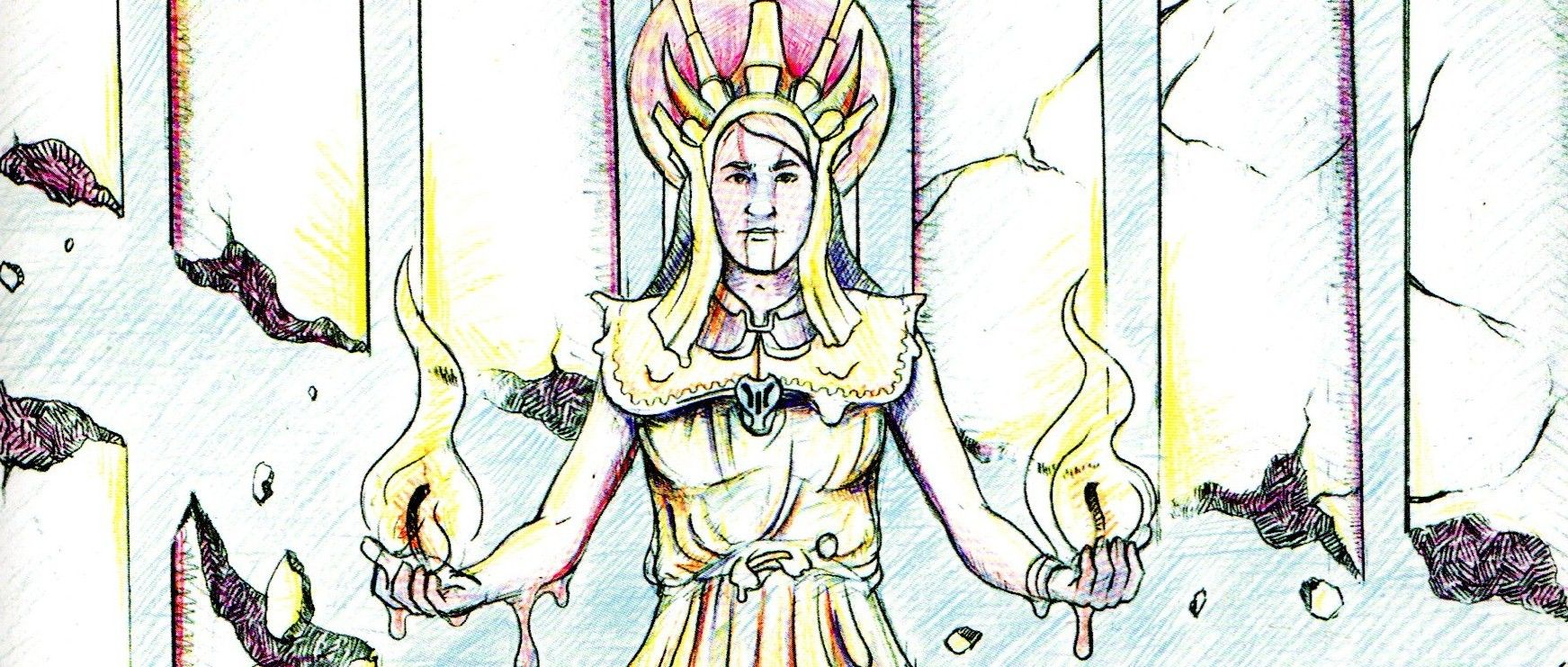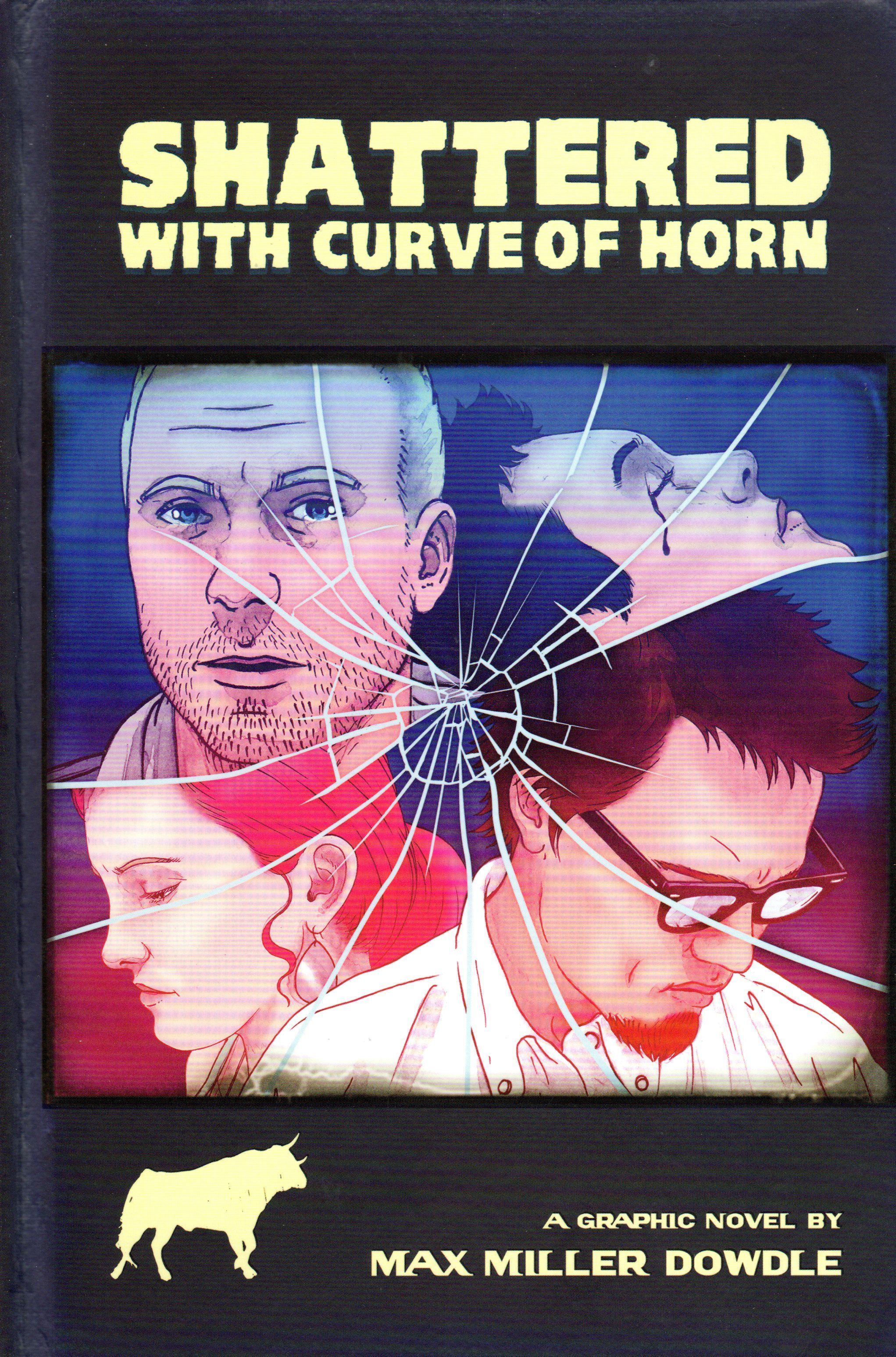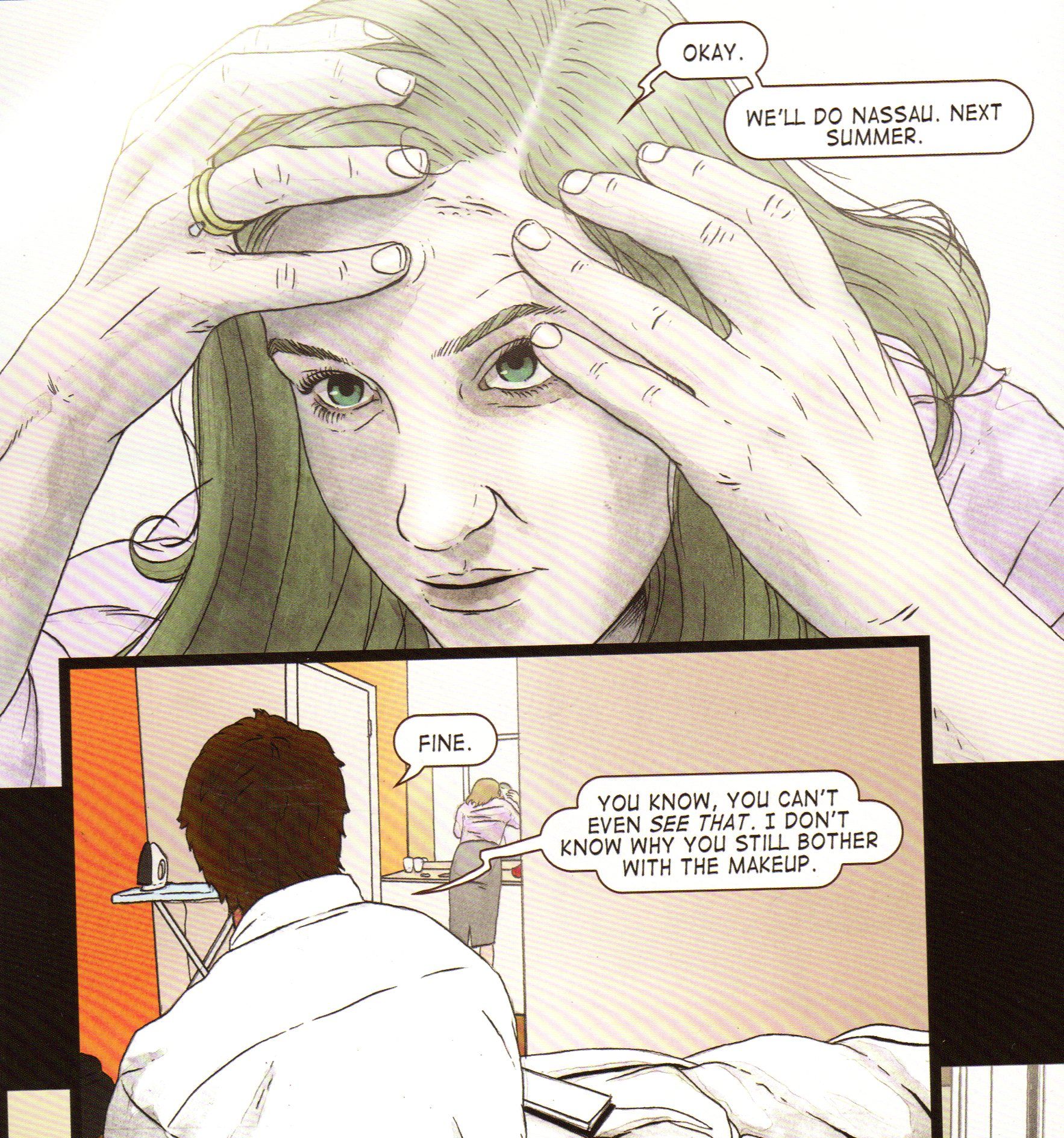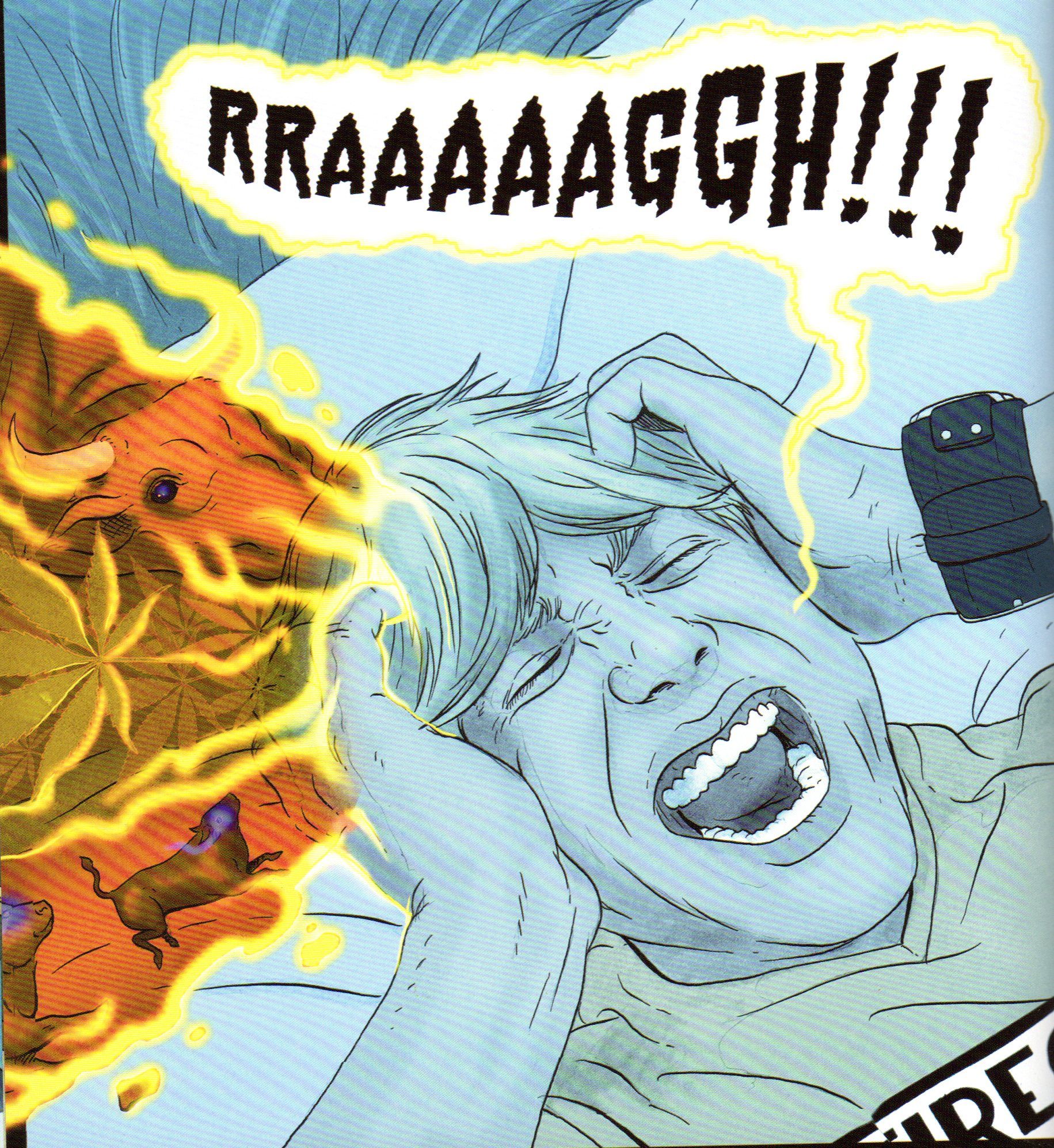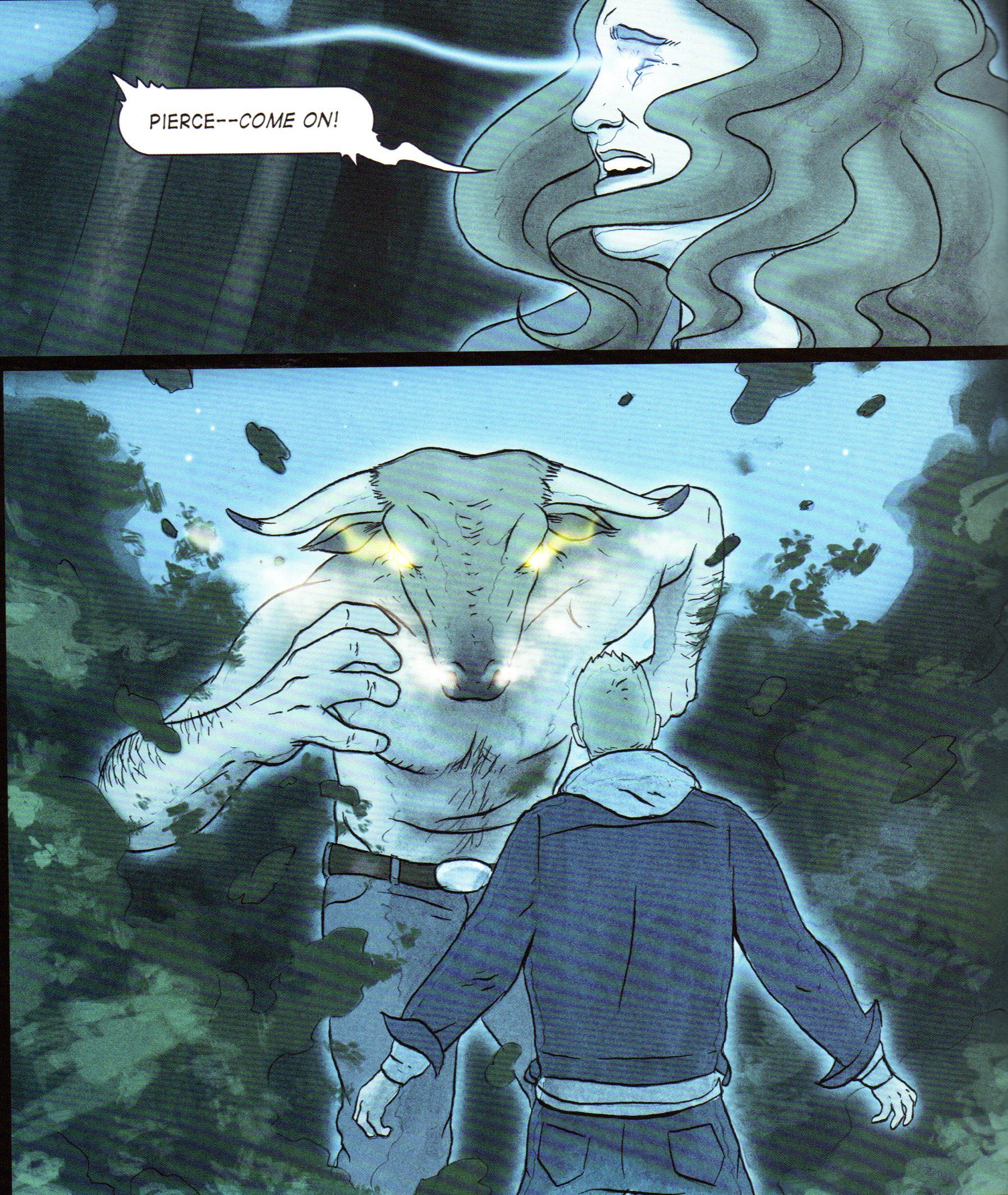"I travel the world and the seven seas - everybody's looking for something"
Max Miller Dowdle was nice enough to send me a copy of his debut graphic novel, Shattered with Curve of Horn, which he published through his Artagem Graphic Library. It's a very nice publication - it's a keen hardcover, and the production values are high.
You can read it on-line, or you can head over to Dowdle's web site and pony up $18 to get it in print. He's not leaving it on-line forever, according to him, so who knows how long it will be there!
I feel a bit bad about not reviewing this earlier - I've had it for a while, but I haven't written about it yet. One reason is, of course, because I'm doing daily posts that suck up a lot of my time (my nice buffer I had at the beginning of the year is almost gone) and I'm trying to make sure I have them written through the end of July so when I take a week off and go to San Diego, there won't be any missed days. So that's one reason. Another reason is that I've been pondering the book. It's the kind of book you ponder, which is not a bad thing at all. Dowdle's plot is nothing to write home about - an artist and his wife are visited by an old friend who just got out of prison, and the friend wants to reminisce about the past, which turns into an examination of what happened the night the crime for which he was convicted occurred. It's certainly not a bad plot, but an astute reader can see what's coming, although Dowdle does pull off one final interesting twist. No, it's something to ponder precisely because the plot is somewhat pedestrian. Dowdle doesn't care about the plot as much as he cares about the ideas behind the plot. And when that happens, a good book will make you ponder things.
As I mentioned, the plot is simple. Matthew Dyer is preparing for his first huge gallery show, and he and his wife, Caitlin, are talking in their motel room before they leave. Caitlin has invited an old friend, Pierce (whose name is loaded with symbolism!), who just served about a decade in prison. When Pierce arrives, they crack open some beer and talk. We find out that Caitlin works for a pharmaceutical firm, and Pierce reminds them that the last time they were together, they took Cluo, a drug she had smuggled out of the lab. We also find out that a fourth friend, Shane, was killed that night, and that's why Pierce went to jail. Pierce claims that the drug allowed him to enter his friends' dreams, even though Matthew and Caitlin say it doesn't work like that.
Pierce also says he doesn't remember everything that happened that night, so he asks Matthew to tell the story. That leads to two extended flashbacks, where first Matthew and then Pierce recount what they recall about the night Shane died. That, of course, is where the story gets complicated.
Dowdle keeps things ambiguous, even though it's implied that one of the stories we hear isn't true. Some of the things both Matthew and Pierce say can be contradicted, so we don't ever really know what the whole truth is. That's not really the point, of course, as Dowdle is showing that memories betray us and we shape our own memories to fit a narrative we've constructed. All three survivors of the night have formed their own versions of what happened, and Dowdle never really comes down with a definitive version, even when we think he does. What he wants to do is examine dreams and art and the collective unconscious (Jung would love this comic!). We learn that Matthew's father isn't all that supportive of his choice of career, and he's a bit awkward around women. The death of Shane, actually, is quite good for him, because it's implied that he was able to be a shoulder for Caitlin to cry on, which led to their marriage. His art relies heavily on dream imagery, and Dowdle uses that idea nicely, as the dreams the characters have during their weird night become important as we move along. Dowdle doesn't come right out and say it, but he does ask questions about the nature of creativity and what artists do about it. He wonders what plagiarism is and where it comes from and what can be done about it. He doesn't offer any answers, but he doesn't have to. Dowdle also brings up the idea of building a life on lies and what happens when it collapses. Is Matthew lying about what happened the night Shane died? Is Pierce? Is Caitlin? If so, are their lives made insignificant because of one night? These are tough questions, and it's neat both that Dowdle brings it up and that he doesn't resolve them.
Dowdle was trained as an oil painter, and you can see that in both the positive and negative aspects of the artwork.
He does a wonderful job with Matthew's paintings, which isn't surprising, and he makes the visions the characters see when they take the drug really impressive. His characters are distinctive, and he ages them well - it's over a decade since the incident, so they've aged a bit, and Dowdle makes it believable. He's good at the way the characters interact with each other, from their facial expressions to their body language, which is crucial as so much of the book is about people talking to each other. There are a couple of places where the expressions of the characters don't seem to match the dialogue, but it's not that big a deal. Dowdle shows some of Matthew's sketches, and he uses a rougher, more "pencil-like" style for them, which is a pretty neat shift. There's very little action in the book, which is probably a good thing, because Dowdle's figures aren't quite fluid enough yet to make the action look good. His fine lines for the characters work well because, when the characters are out in the field before they take the drug, he uses paints in the background that look almost like impressionistic watercolors, so the contrast works pretty well. There's a lot to like about the artwork, and where there are weaknesses, they're not overwhelming.
I like this comic, although I don't quite love it. It's clear that Dowdle has talent, both as an artist and writer, and Shattered with Curve of Horn is a bit more conventional than it looks at first glance, which allows Dowdle to stretch his writing muscles without biting off more than he can chew. The best part of the writing is that Dowdle smartly doesn't try to do too much, which lets the reader fill in the blanks a bit. It's a different way to get to some universal topics, and it's a very nice-looking comic. Give it a look!
Rating: ★ ★ ★ ★ ★ ★ ★ ☆ ☆ ☆

